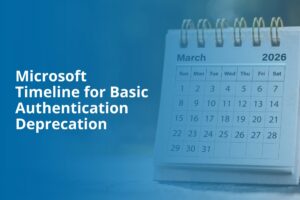
As technology continuously evolves, digital faxing has emerged as an essential tool for many organizations. Understanding its functionality can significantly improve document handling efficiency. This guide introduces digital faxing, explains how it works and its benefits, and offers tips on maximizing this technology.
How Does Digital Faxing Work?
Sign Up for a Digital Fax Service
To get started with digital faxing, you’ll first need to sign up with a digital fax service provider. One reliable option is Faxination by Fenestrae, which offers virtual fax numbers and a range of user-friendly features. Once you sign up, you’ll be assigned a virtual fax number that will be used to send and receive faxes.
Sending a Fax
Digital faxing allows you to send faxes through various methods:
Via Email
Sending a fax through email is a seamless process. You create an email, attach the document to be faxed (typically in PDF or DOC format), and dispatch it to the recipient’s fax number, followed by the service provider’s domain—the digital fax service proceeds to convert the email into a format that aligns with conventional fax machines.
Via Web Portal
An alternative method to send a fax is via the service provider’s web portal. Log in, upload your document, input the recipient’s fax number, and dispatch it.
Via Mobile App
Many digital fax services offer mobile apps that empower users to send faxes straight from their smartphones or tablets. This functionality boosts flexibility and convenience, especially for those on-the-go.
Receiving a Fax
Upon receiving a fax, the digital fax service swiftly processes it before forwarding it to your email as a PDF attachment. You can conveniently manage and view your faxes via a web portal or mobile app, ensuring seamless access to your documents from anywhere.
Notifications and Archiving
Digital fax services typically notify you via email when a fax is successfully sent or received. Additionally, they often offer archiving features, allowing you to store and organize your sent and received faxes online. This feature ensures that you have a secure and easily accessible record of all your fax communications.
What is the Difference Between Digital Fax and Email?
Digital fax and email are both electronic document-sending methods but differ significantly in technology, security, reliability, formality, and legality. Digital fax is more secure than email as it uses internet and phone networks to convert documents into fax format, enhancing security with encryption and meeting regulations like HIPAA, making it more tamper-proof. It confirms the delivery, ensuring consistency, and is considered formal and trustworthy for official documents, often legally binding. Email, on the other hand, solely uses the internet for sending messages and attachments, is vulnerable to phishing and hacking, and its read receipts can be unreliable, with emails sometimes filtered as spam. Email is seen as less formal and reliable for critical documents, maintaining original editable formats with varying legal standing. Therefore, digital fax stands out in terms of security, reliability, and compliance, making it perfect for handling sensitive documents.
Stay Connected with Reliable Digital Faxing Solutions Like Faxination by Fenestrae
Digital faxing is an efficient and secure method for handling your business’s document transmissions. By adopting a reliable digital faxing solution like Faxination by Fenestrae, you can streamline your document management processes and ensure that sensitive and legally significant documents are transmitted securely and efficiently.
If you’re ready to enhance your business’s document-handling capabilities, consider integrating digital faxing into your operations. Contact Faxination by Fenestrae today for insights into our services and how we can meet your digital faxing requirements.








